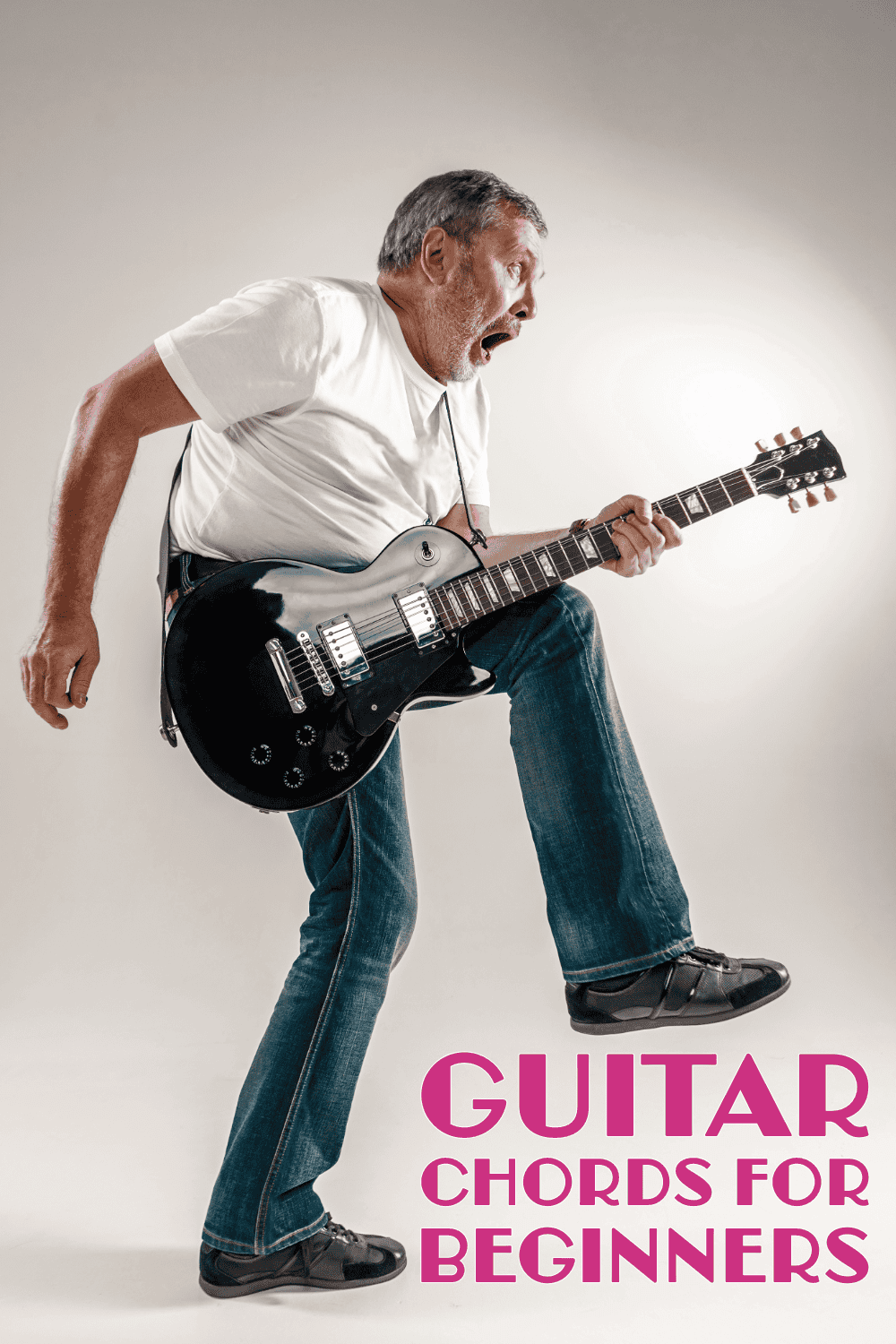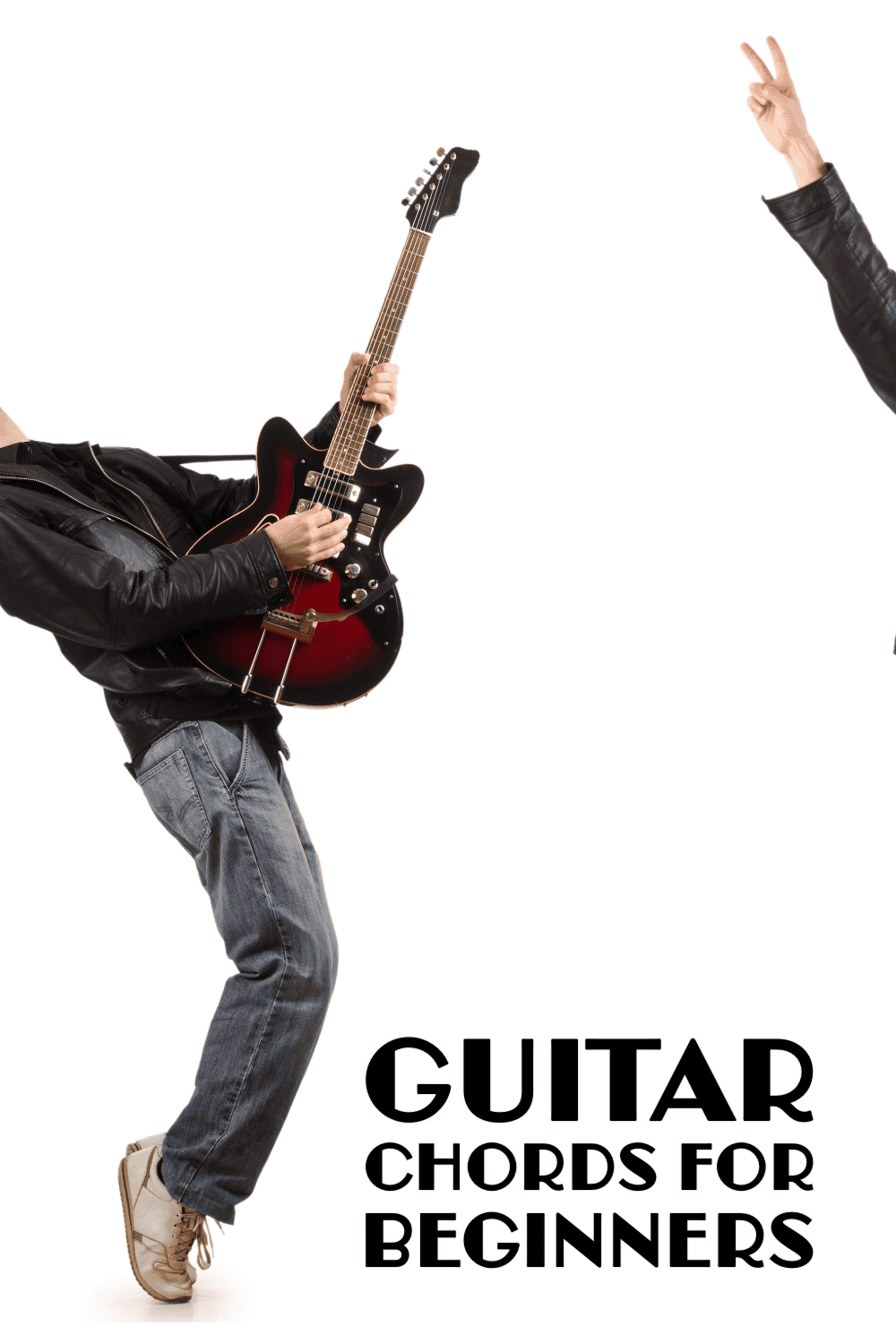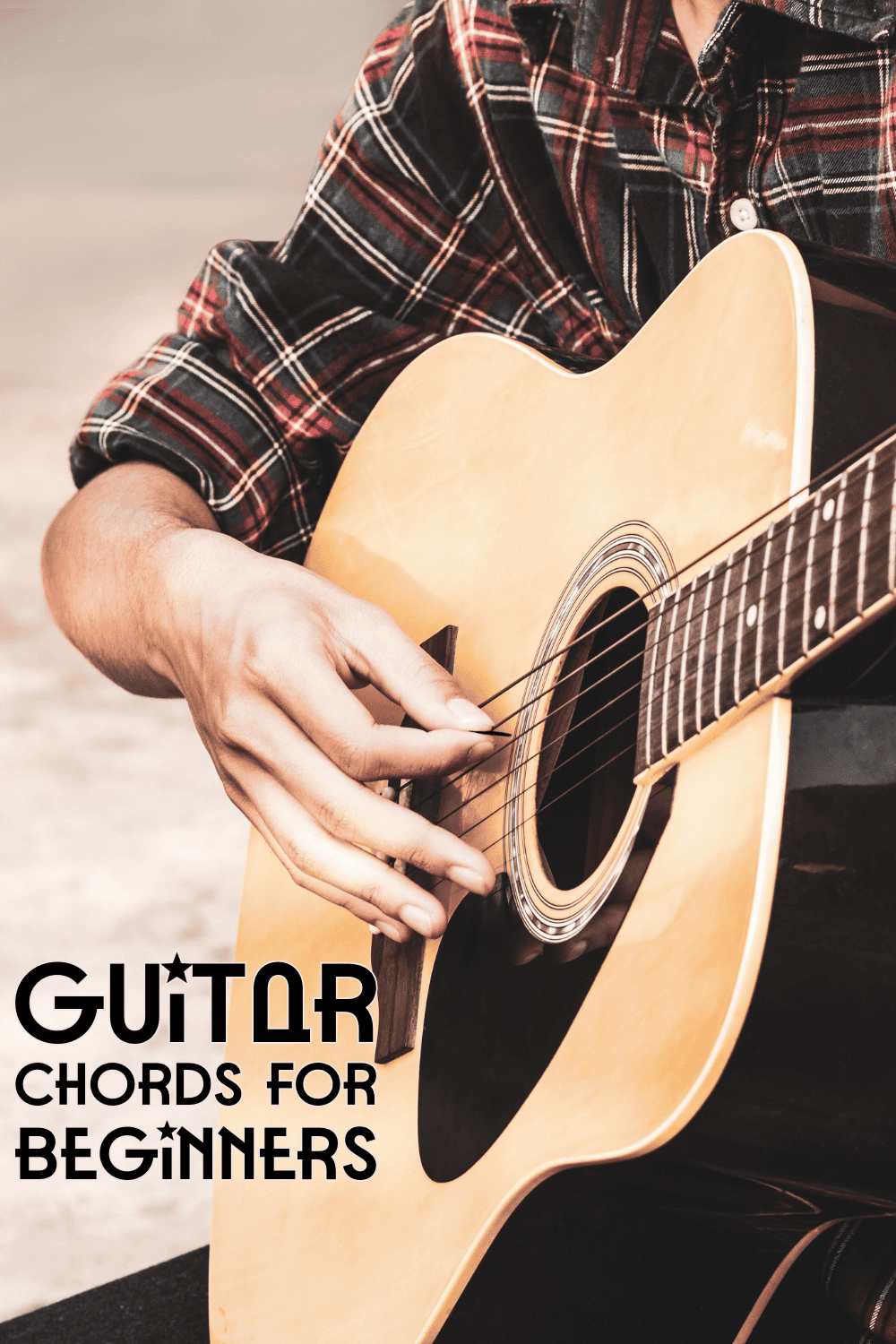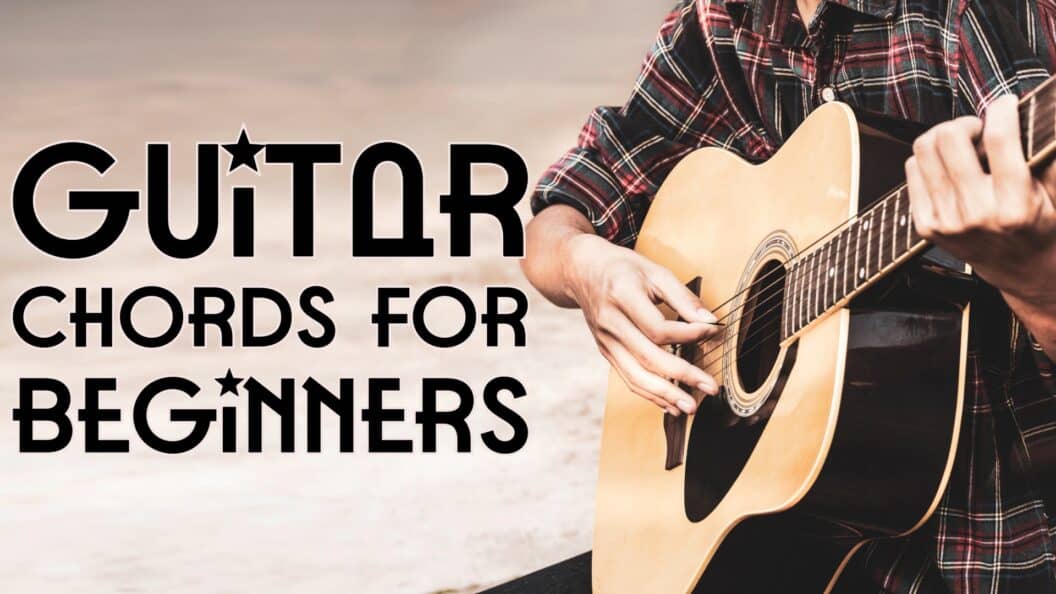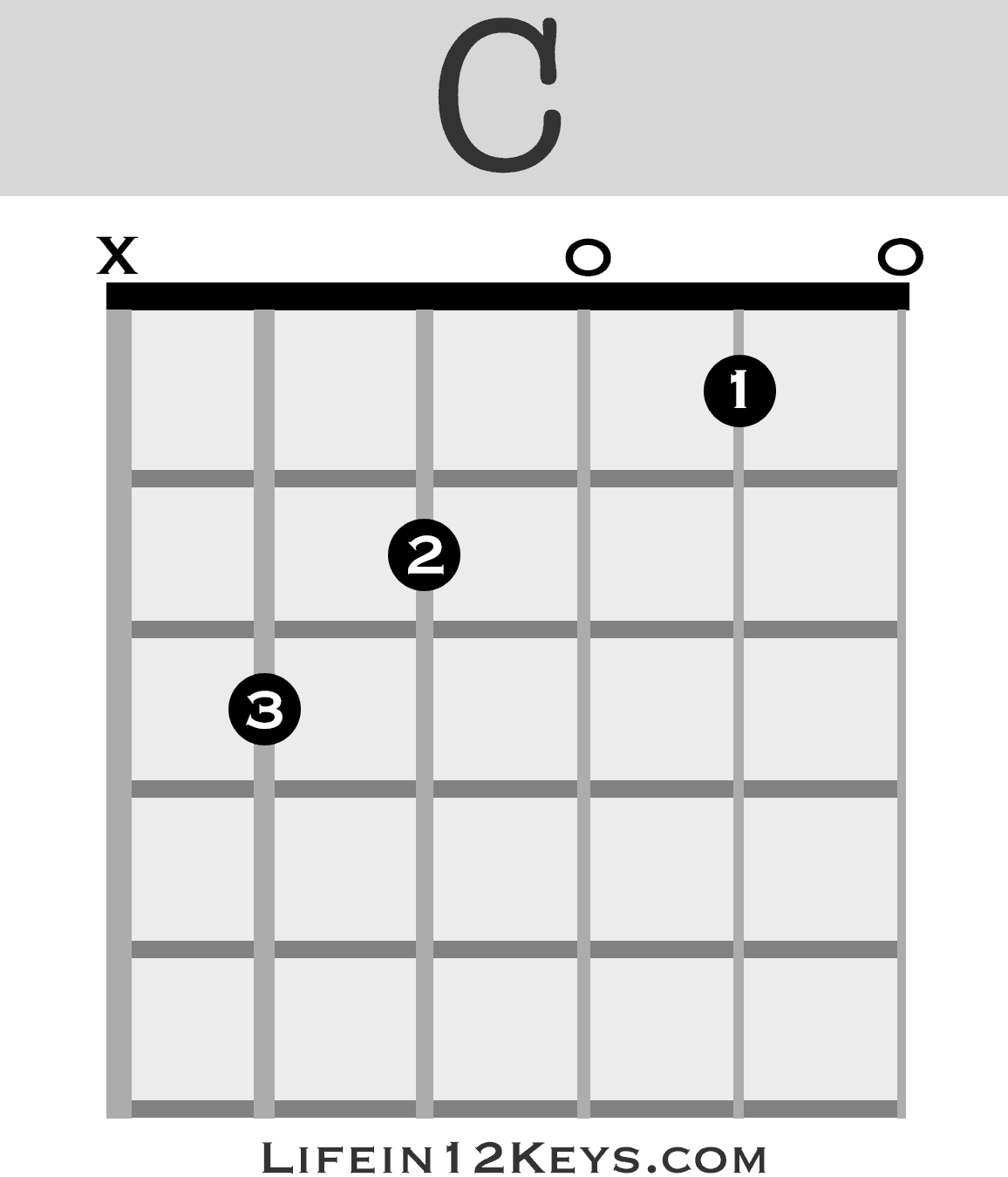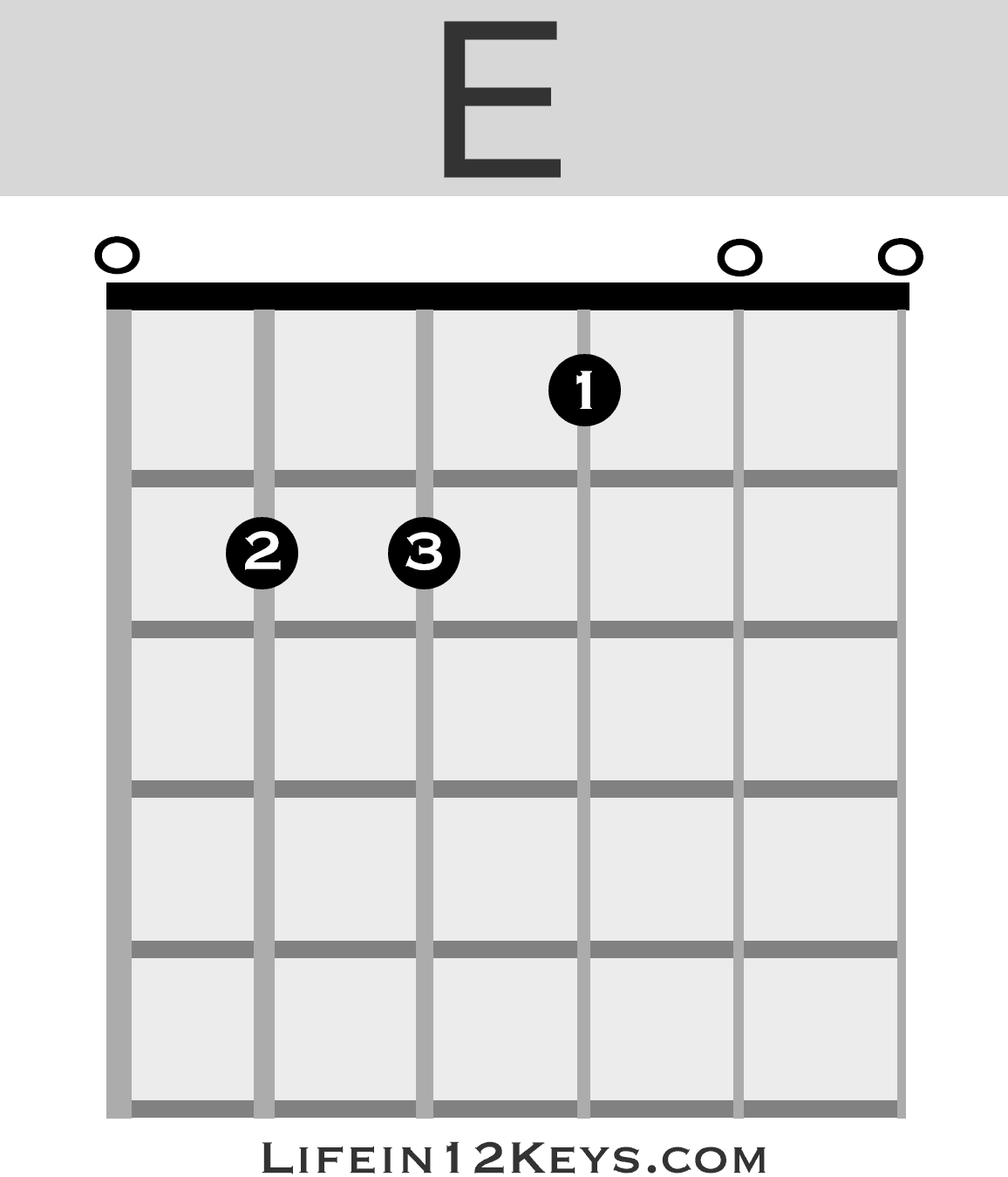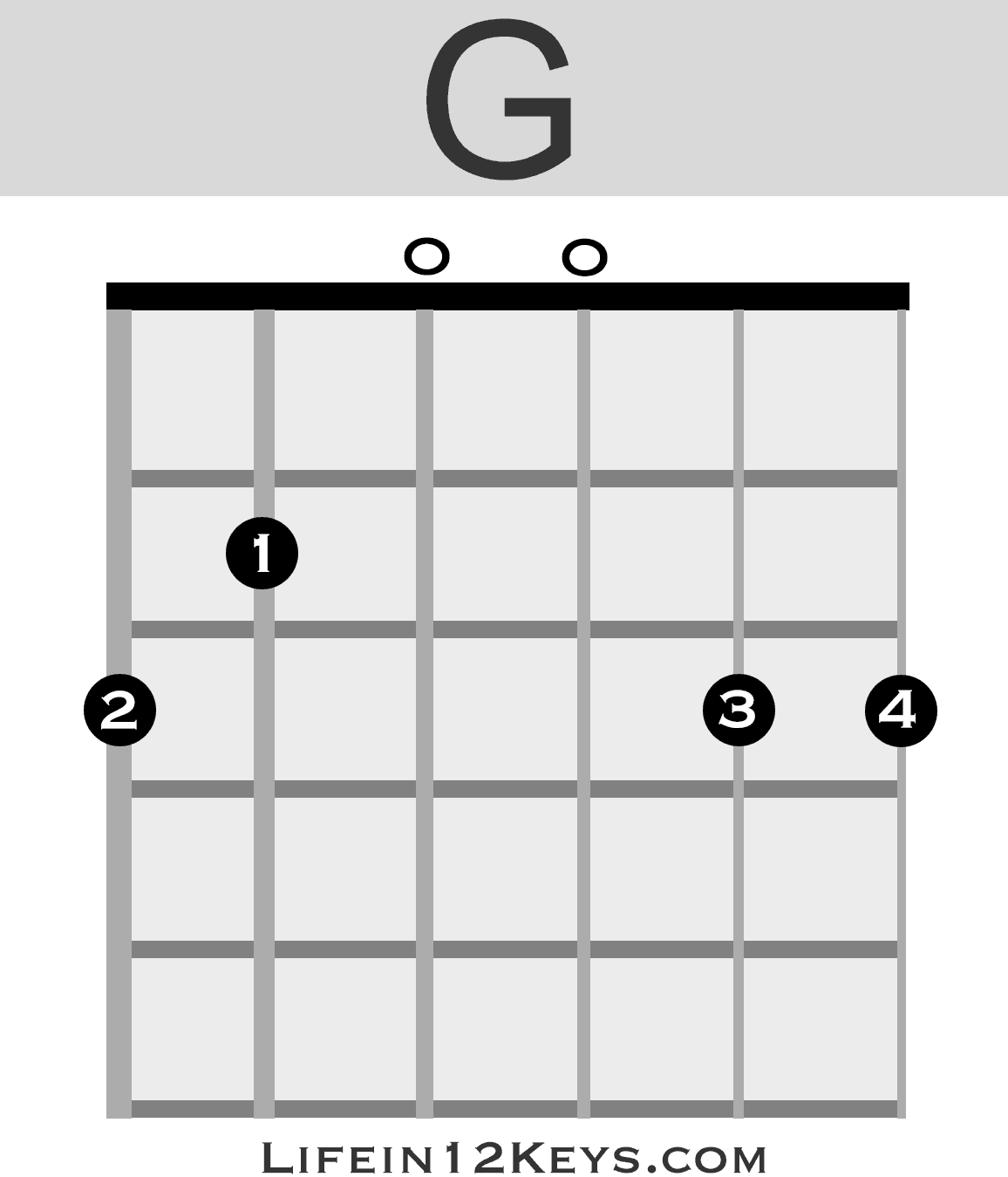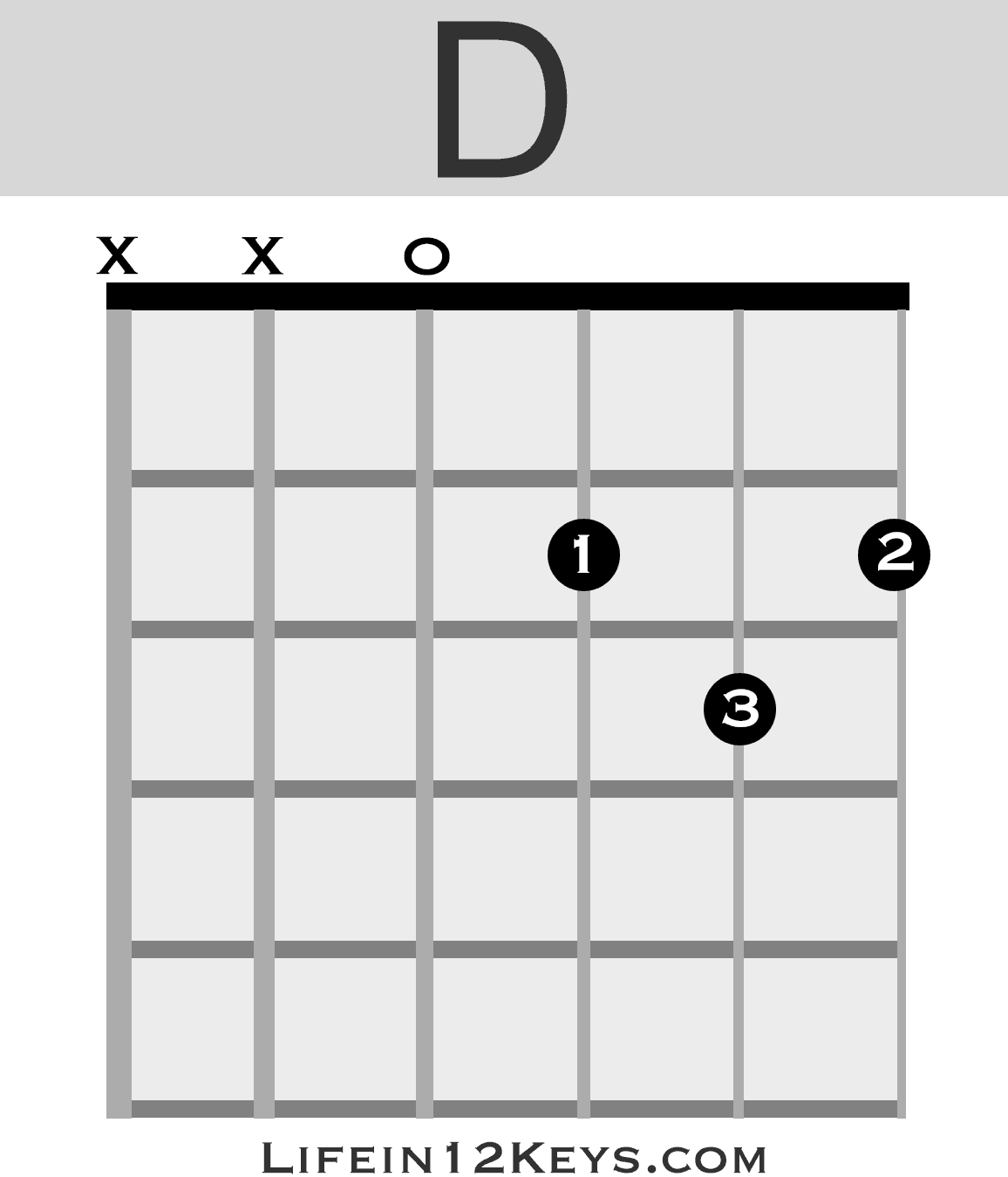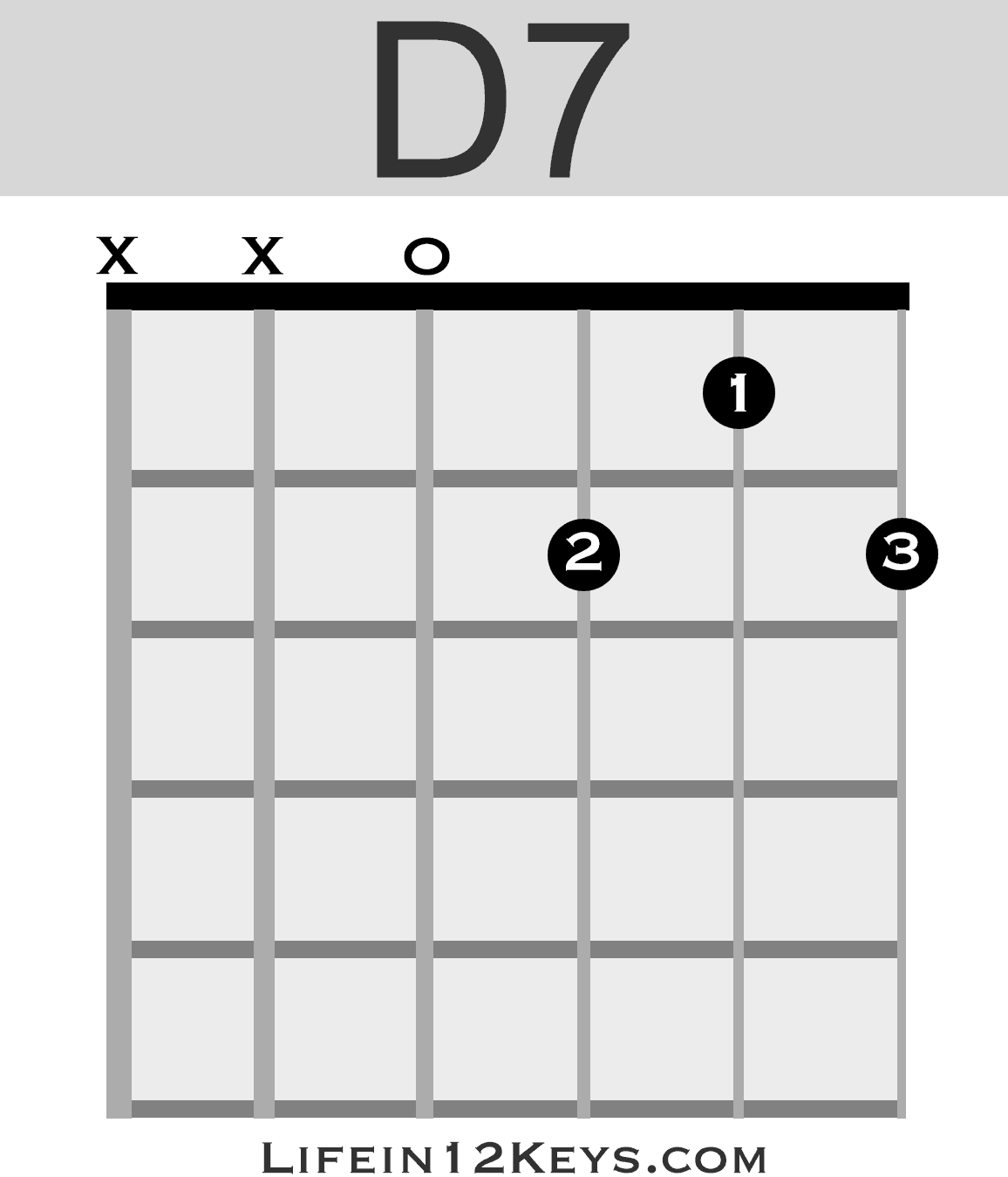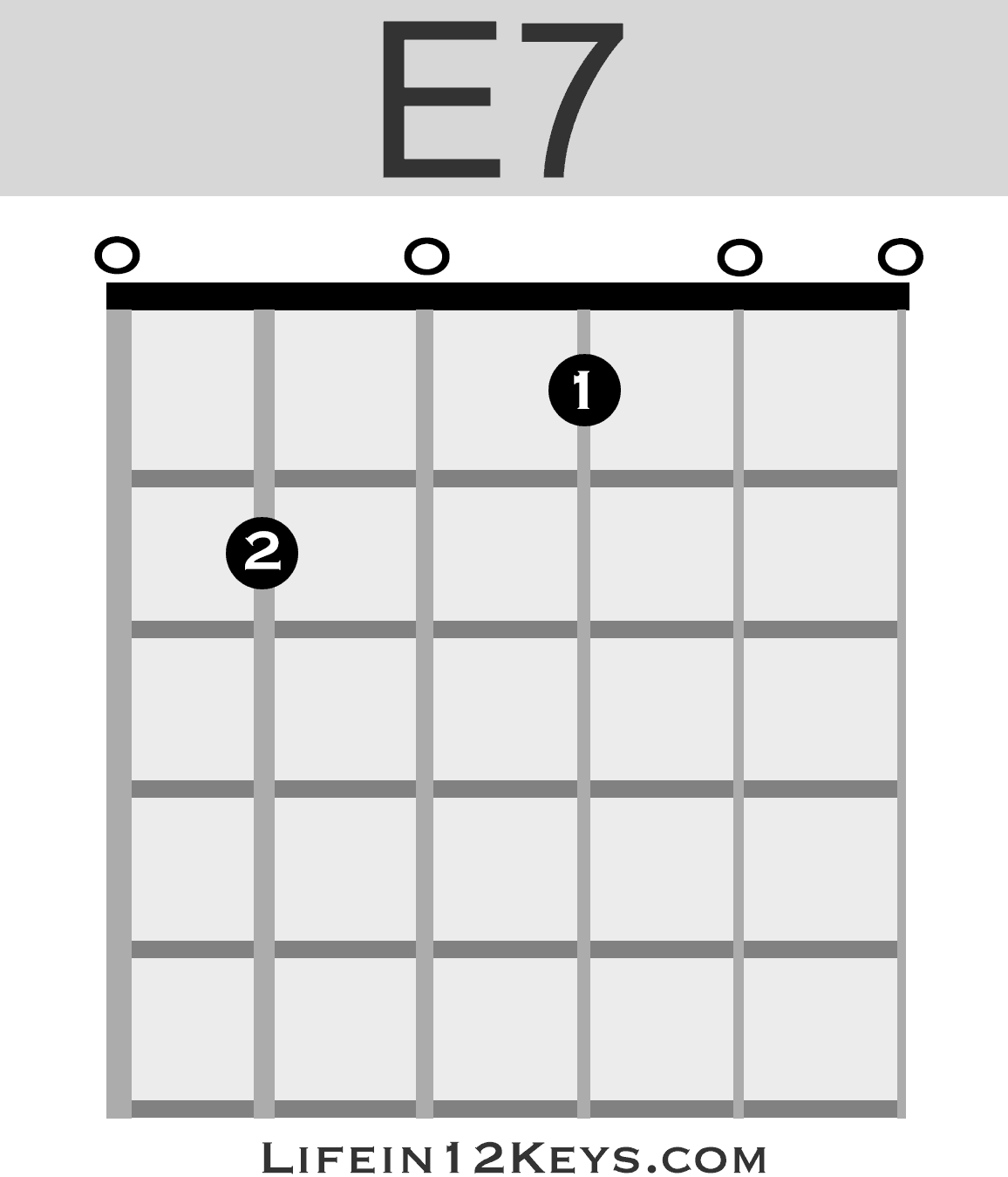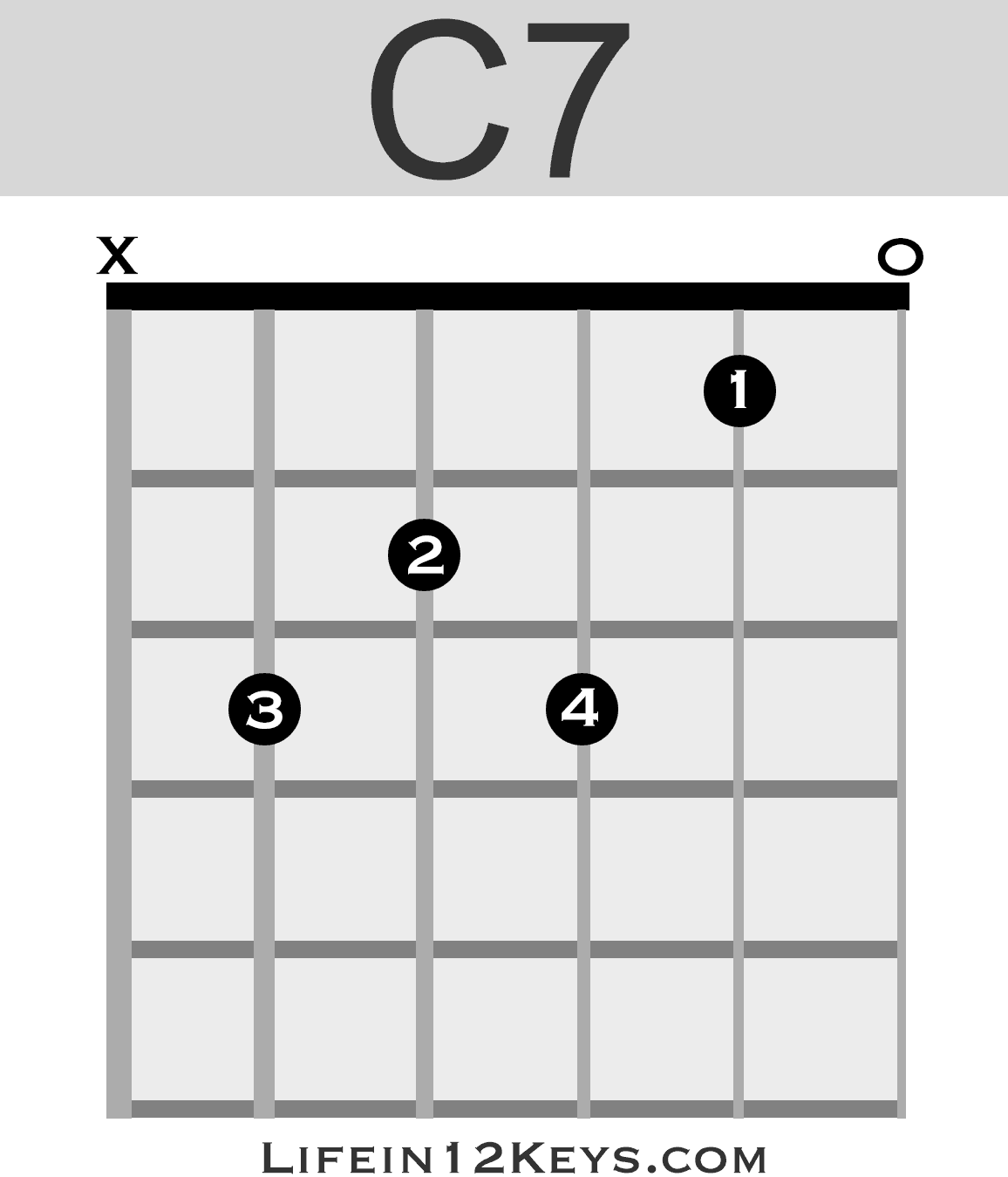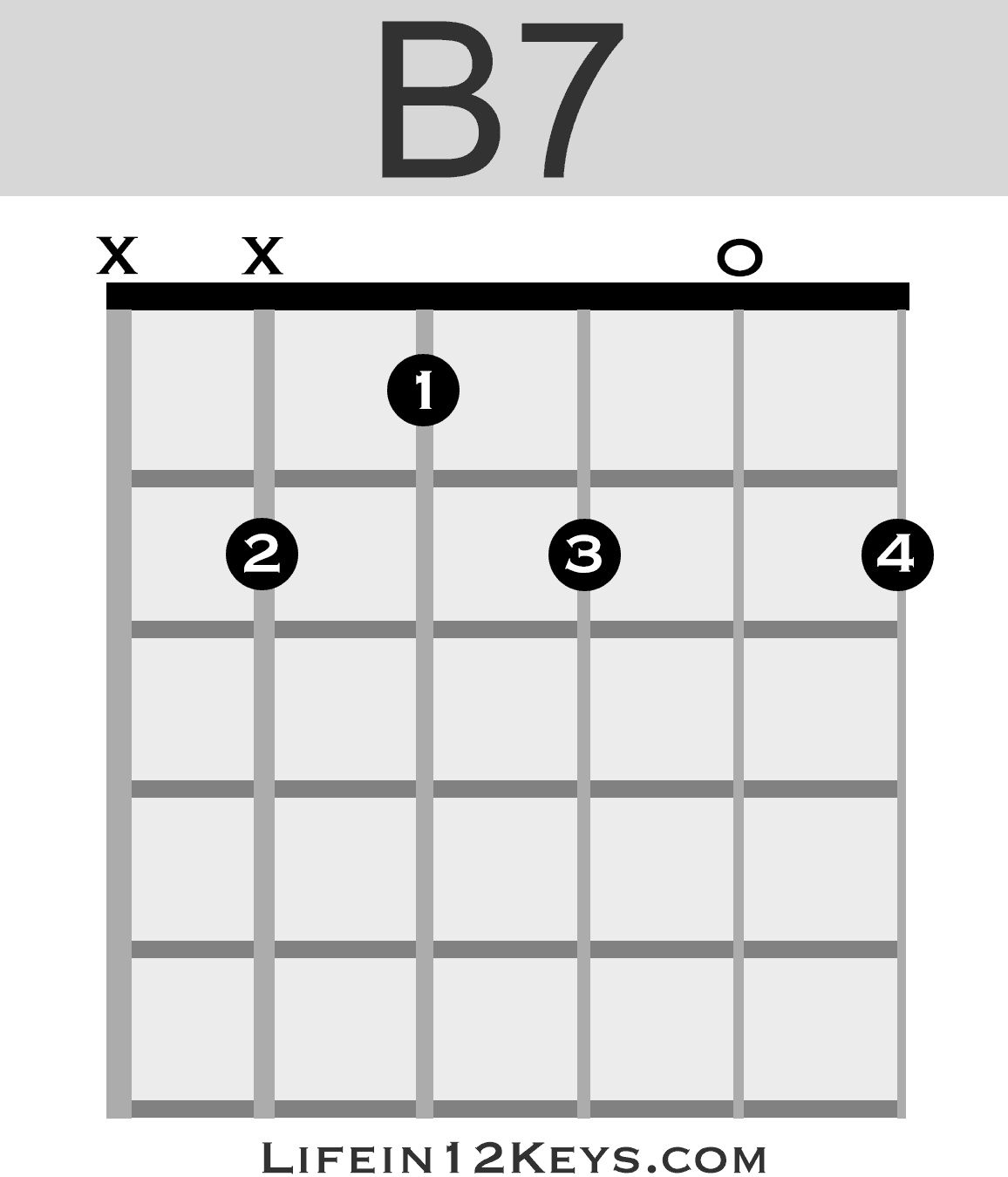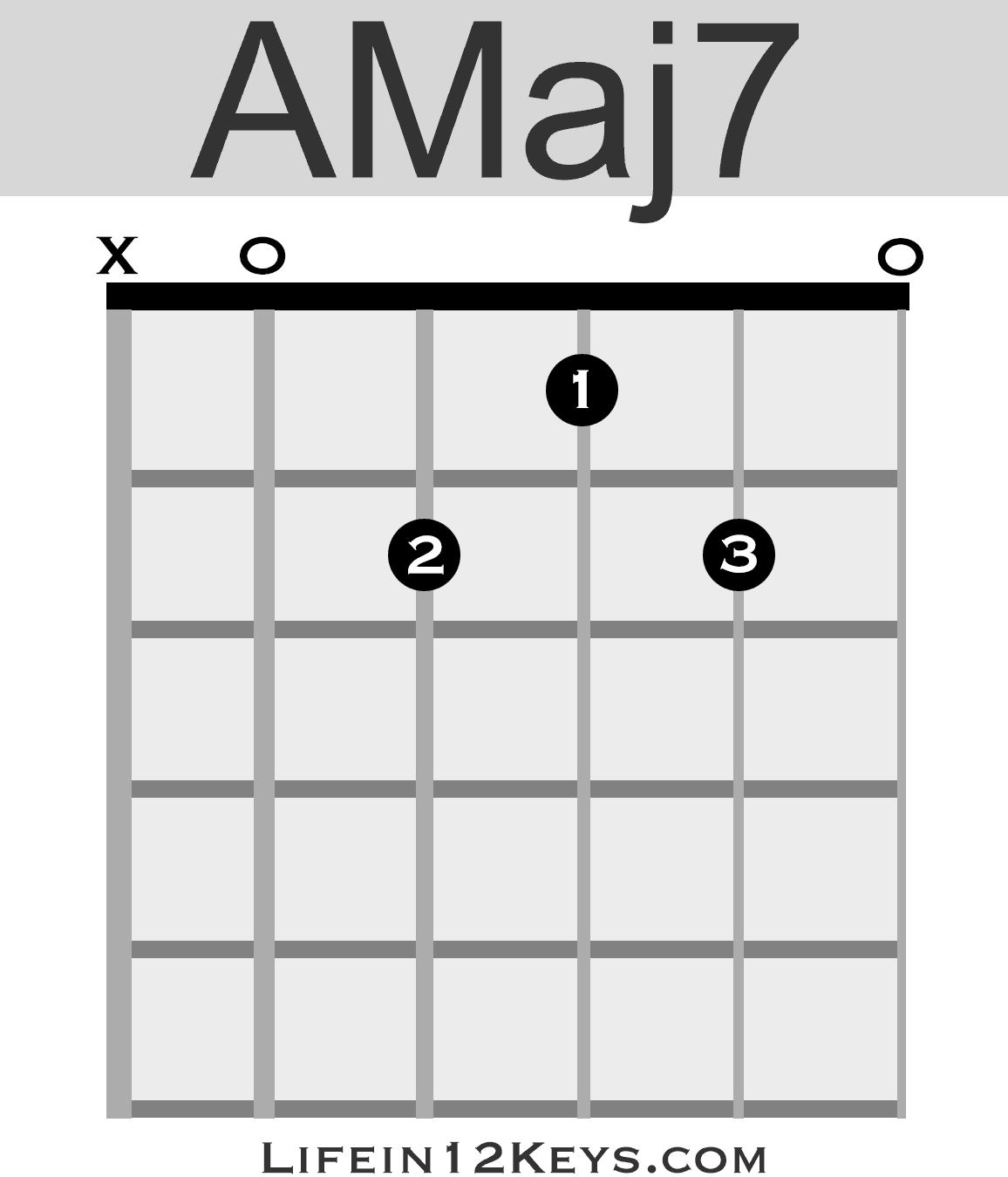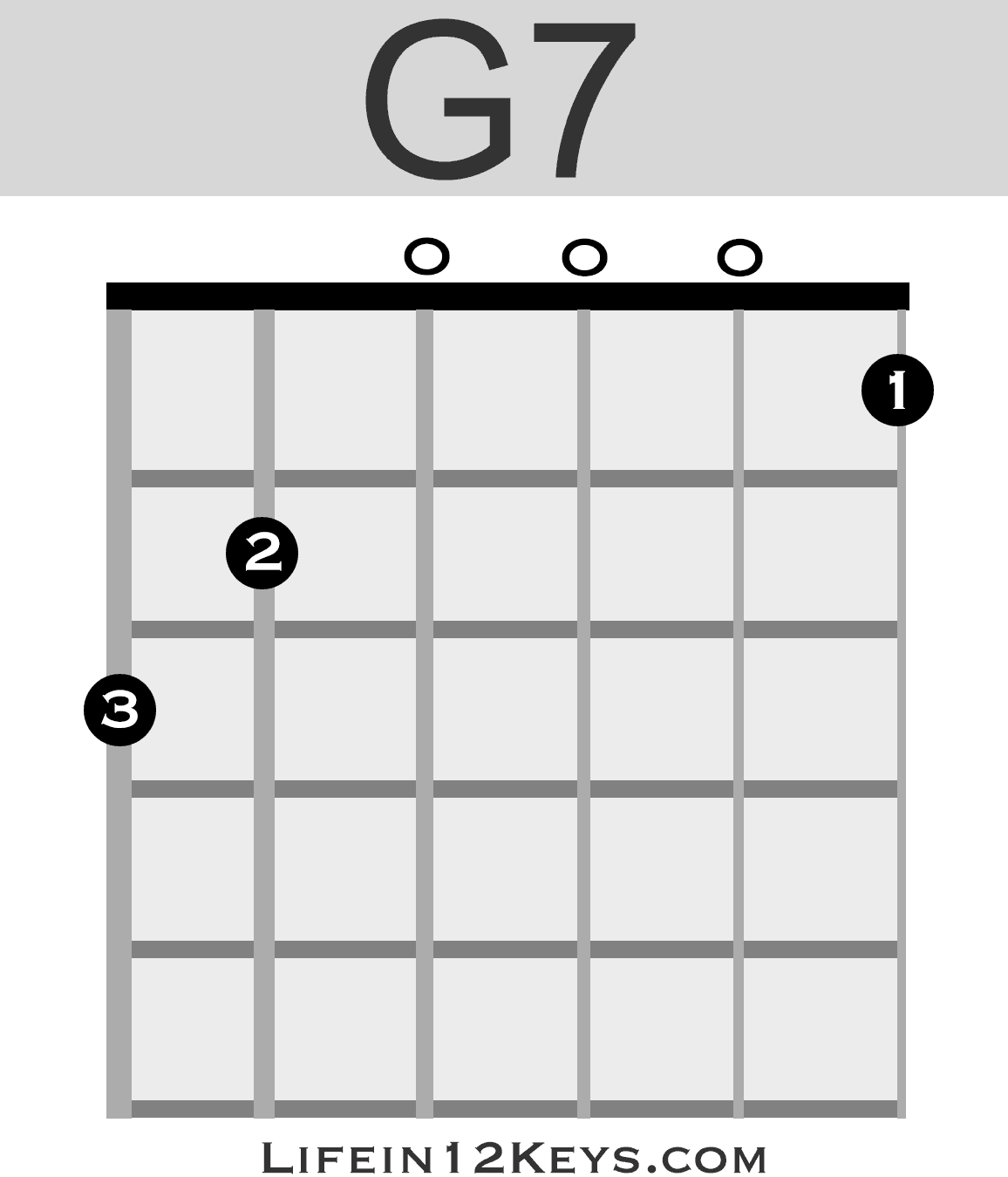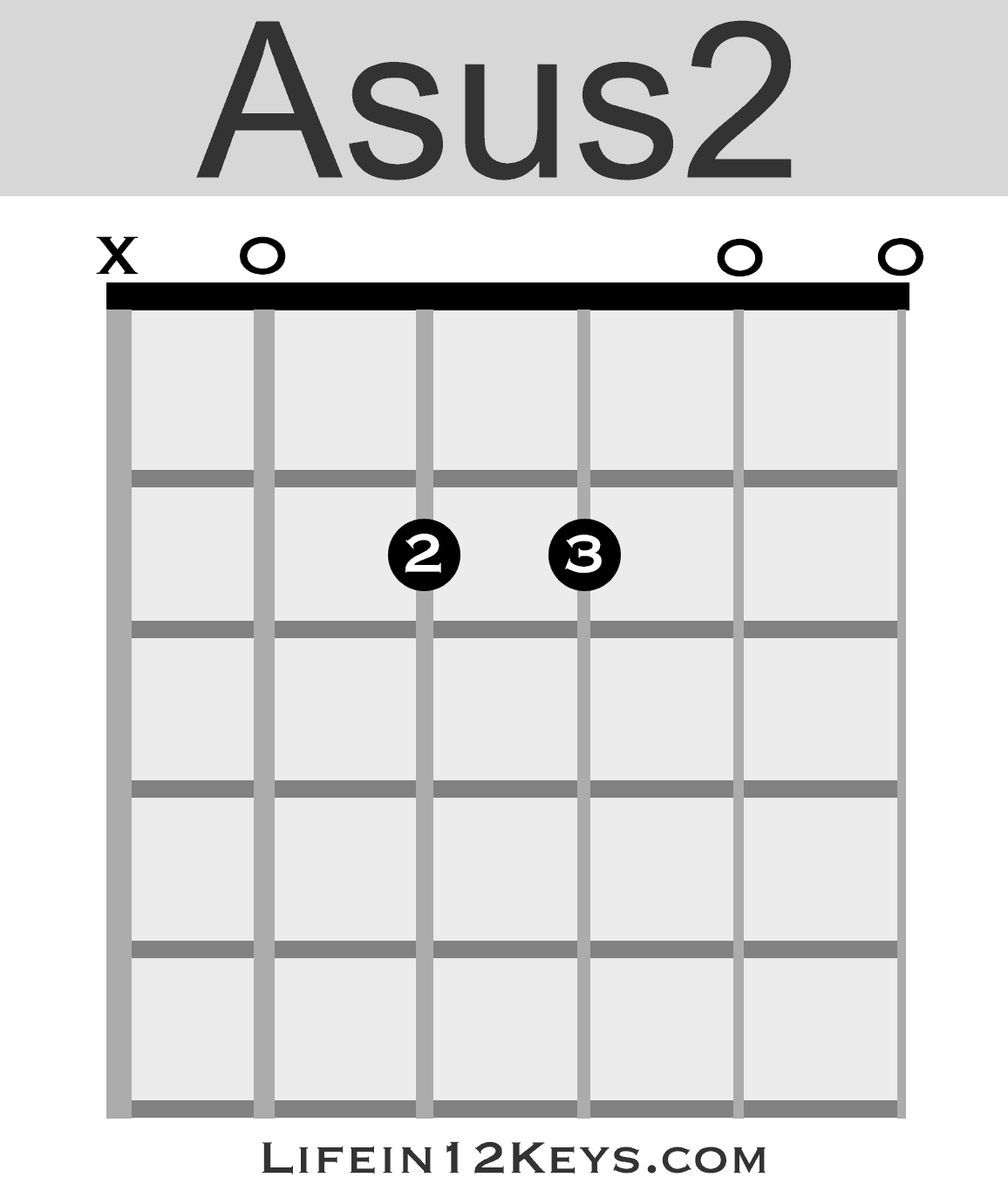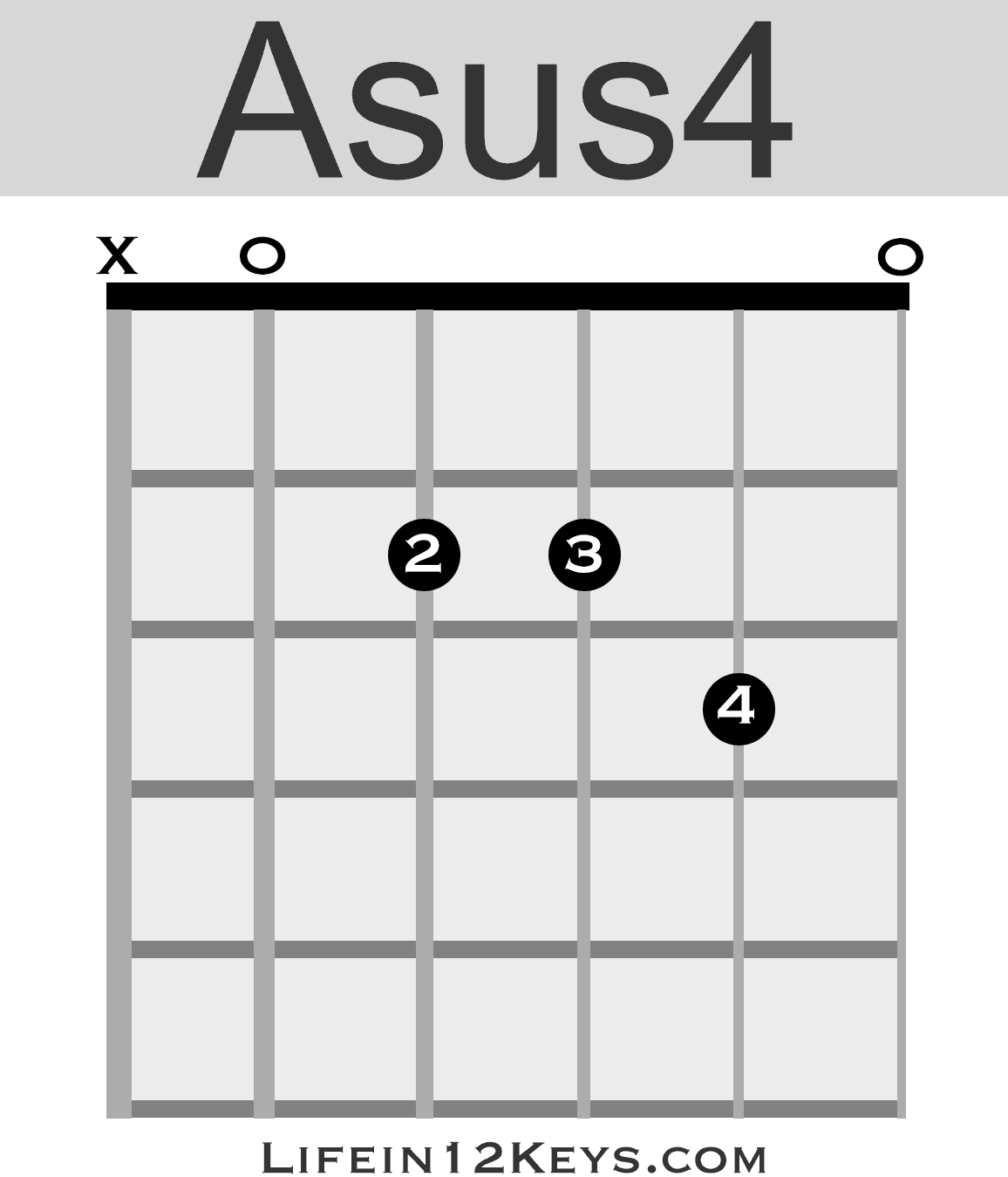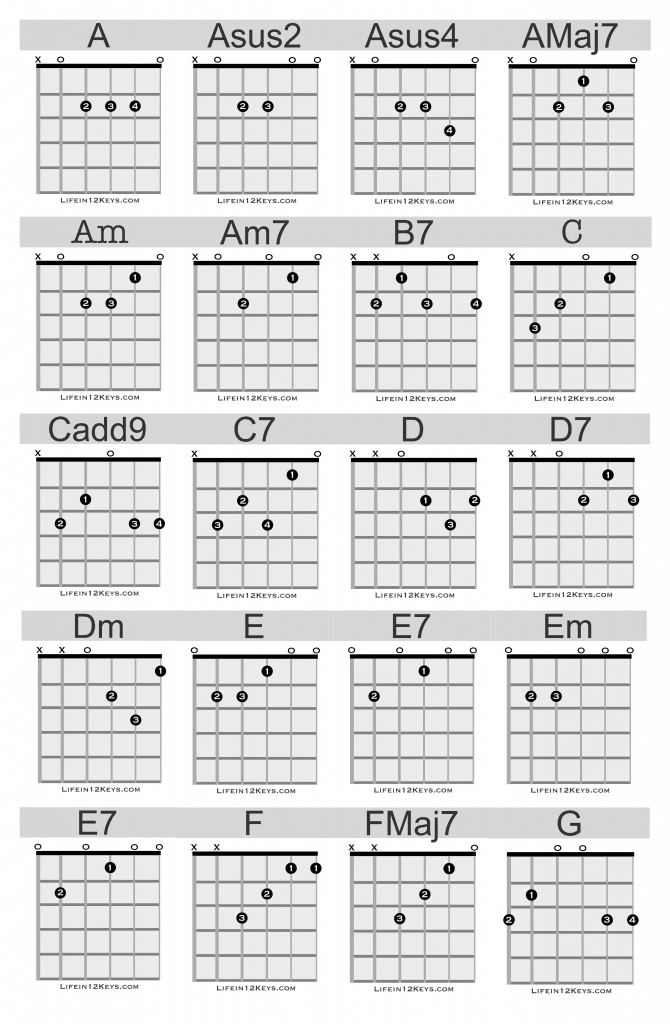Introduction to Beginner Guitar Chords
If you’re new to playing the guitar and wondering what chords are suitable for a beginner guitarist, look no further. I’ve got you covered in this lesson 20 Essential Beginner Guitar Chords… and then some. Don’t be turned off by the term Beginner Guitar Chords though. If you follow through with the lesson, you’ll see it gets into some advance guitar music theory.
You’ll find no shortage of downloadable guitar chord charts and graphs flying around the internet, so what makes this one different? After some 25+ years of teaching guitar lessons, I’ve found that the right mix of open position shapes and a little music theory goes a long way to understanding more complex and difficult chords in the future for beginning guitarists.
Throughout this lesson I’ve included links to other guitar lessons for reference or more depth on a particular topic. After all, the focus today is beginner guitar chords. I’ll do my best to give a brief theory reference that you can (optionally) read up on to further your knowledge later.
The How and Why of Guitar Chords
I’ve also listed the “how” and “why” for each chord type. If you’re going to start learning guitar chords, you’re probably also going to want to know which ones sound good together… and why that is.
Also, If you’re not interested in guitar music theory, that’s ok! At the bottom of the lesson you can grab a printable 20 Beginner Guitar Chords PDF and get started playing right now.
[Update 2024] Since I wrote this lesson, I’ve written an accompanying chord book that goes even deeper.
The Beginners Guide to Guitar Chords
So let’s have some fun and get right to it…
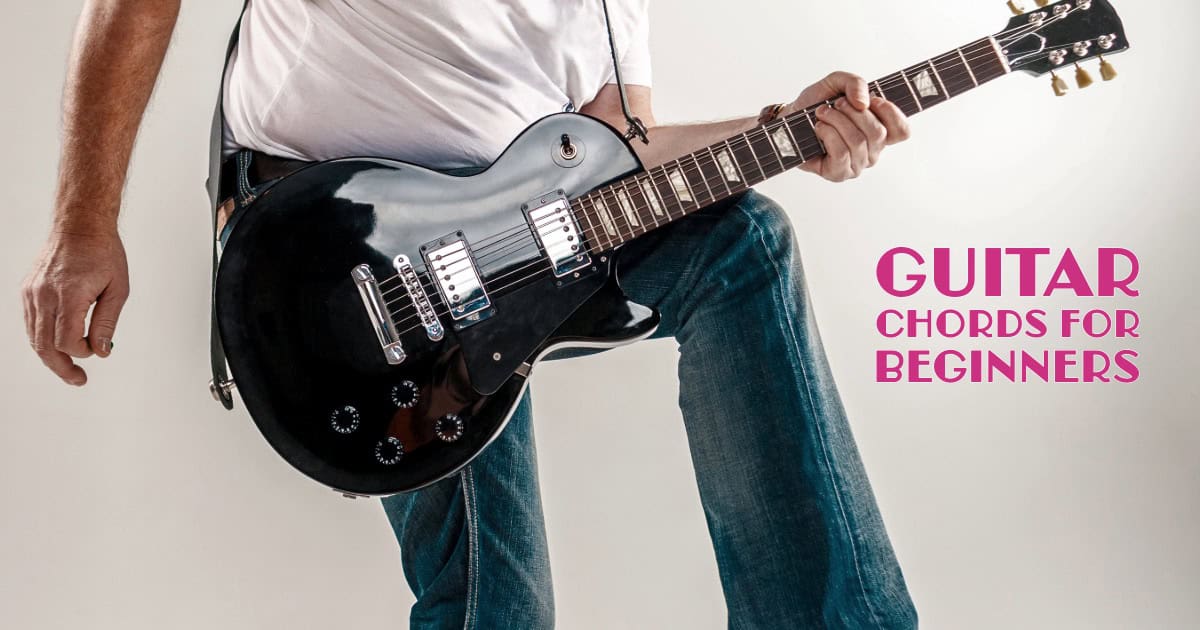
Types of Chords in Music
Throughout the lesson you’re going to see names like “A”, “C7”, “A sus4 “ and more… Let’s take a quick look at what those names mean.
Major Chord Types
Any chord which contains only the 1st, 3rd and 5th notes from the parent (Major) Scale.
For example a “C” chord:
C Major Scale:
- C
- D
- E
- F
- G
- A
- B
- C
C is the first note, so we’ll need that one!
E is the 3rd.
G is the 5th.
Any combination of those 3 notes (and in any order) will make a C chord.
If you just see a letter name like “C” with no letter or symbol after, that indicates a Major chord type.Beginner Guitar Chords Major
Lets take a look at some Major Chord Types:
If you’re a day 1 beginner guitarist, chord charts are easy to read.
- The vertical lines are the strings, left to right, Low E-A-D-G-B-E High
- Horizontal lines are the frets.
- X = Do not play the string.
- O = Play the string open.
- 1,2,3,4 = The numbers of the fretting hand fingers.
Beginner Guitar Chords Minor
Minor Chord Types
A minor chord contains the 1st, 3rd and 5th from the Major scale with one big change:
The 3rd is lowered 1 half-step (semi-tone).
Using the A Major Scale as an example:
- A
- B
- C#
- D
- E
- F#
- G#
- A
Lowering the 3rd, C#, 1 half-step gives us a C natural.
- A 1st
- C Lowered 3rd
- E 5th
Some minor chord types:
-
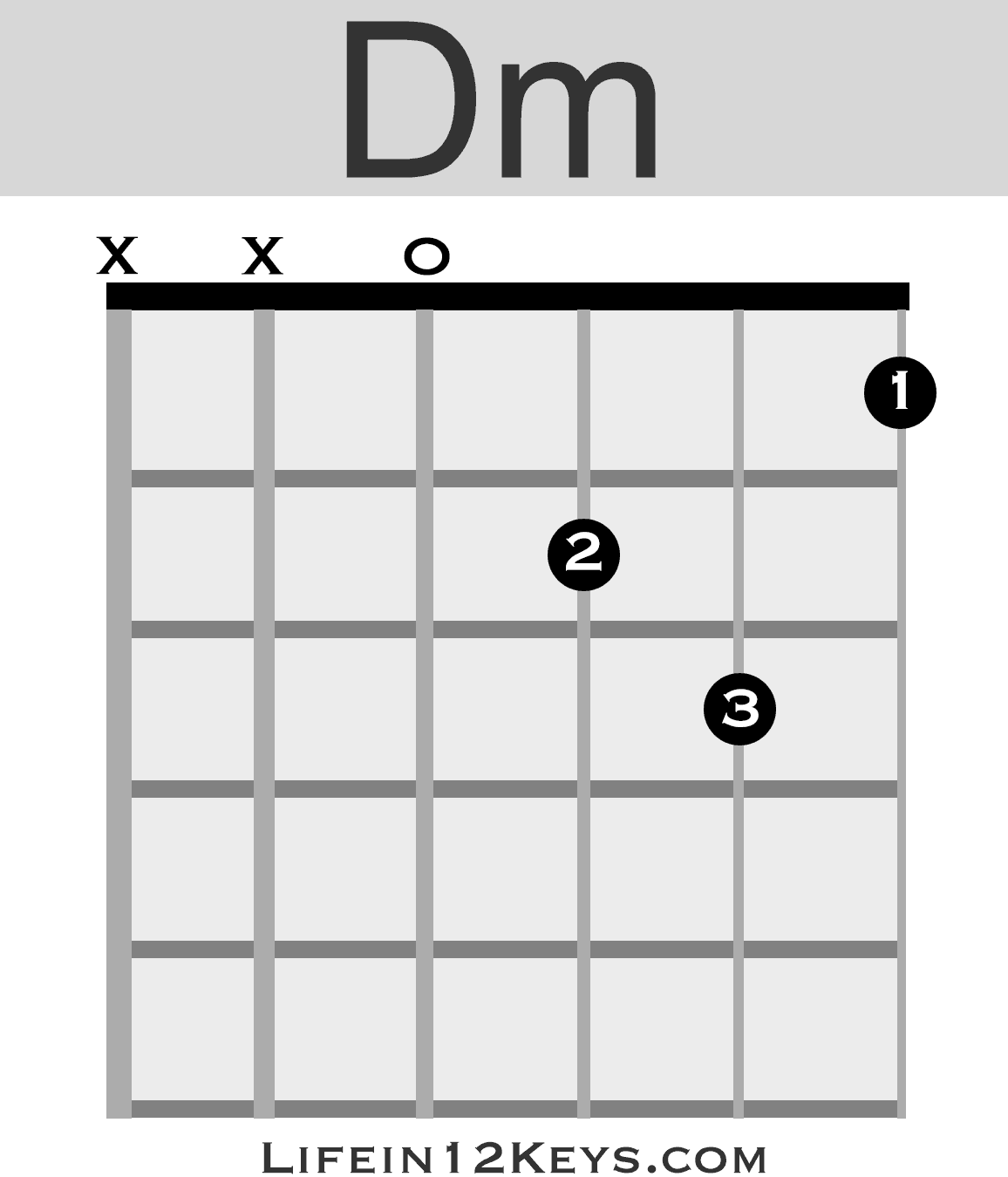
-
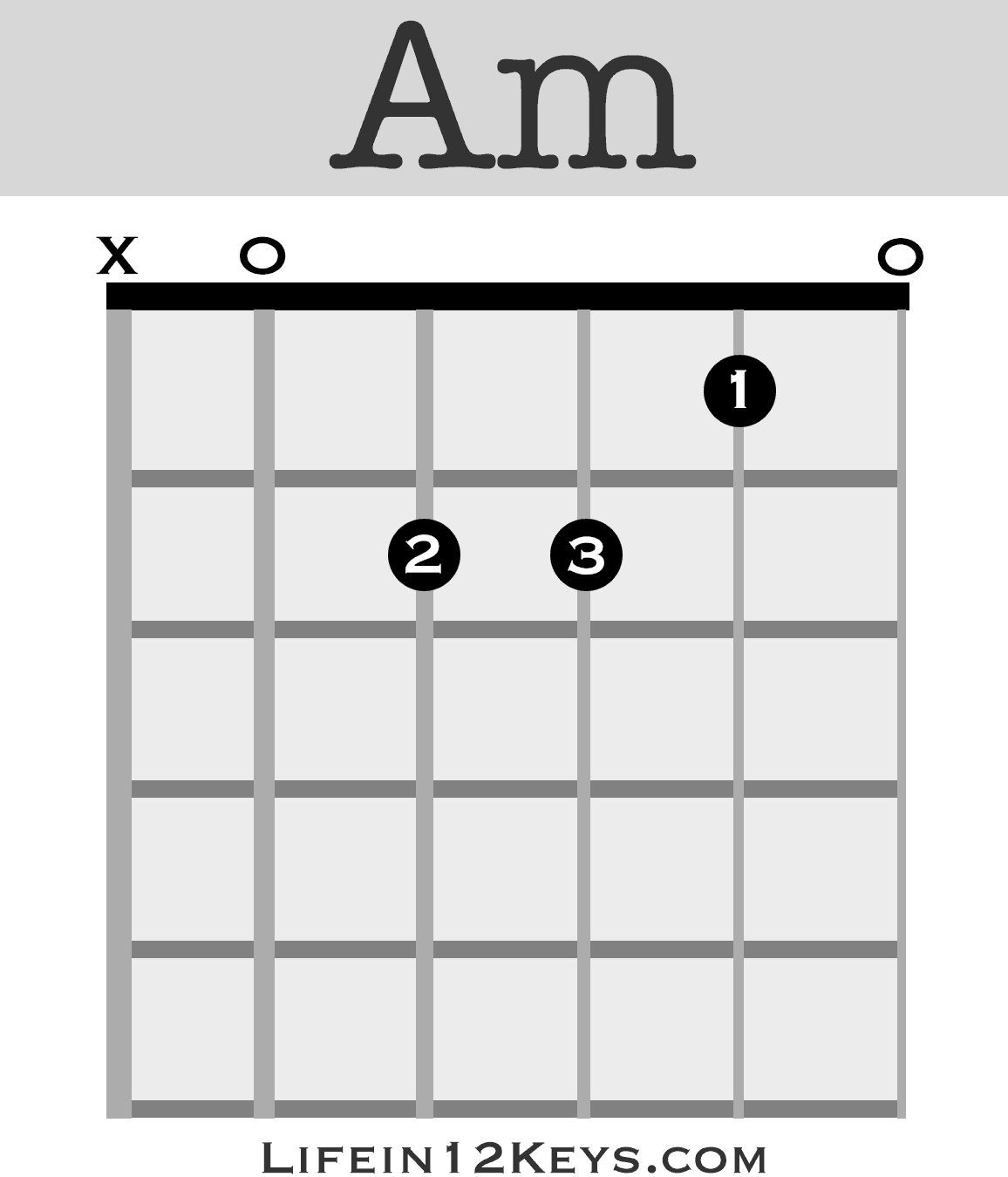
-
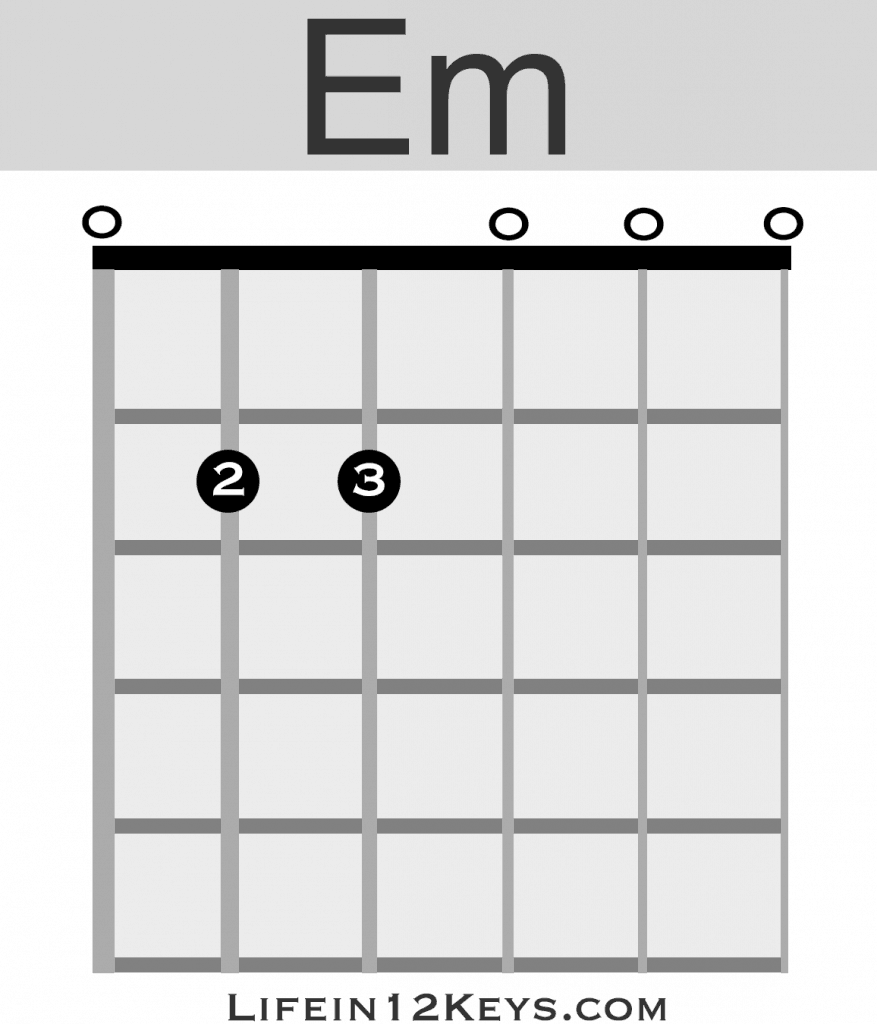
Wanna dig deeper? Check out more guitar chords and how the notes are found on the neck.



How Major and Minor guitar chords work together:
Without getting too deep into more music theory, it is useful to remember that every Major Key has 3 Major chords and 3 minor chords hiding within.
Using our C Major Scale as an example:
- C Major
- D minor
- E minor
- F Major
- G Major
- A minor
- B – The 7th is always a Diminished type (more on that later).
- C
Songs that Use Beginner Guitar Chords
You can create a song using any combination of chords in a key and you can bet that it’s going to sound pretty good. Some examples in the Key of C:
- “Simple Man” uses the chords C, G, Am.
- “Dreams” by Fleetwood Mac starts with a simple F to G that repeats throughout the verse.
- “Ain’t Talkin’ ‘bout Love” by Van Halen is Am to G.
- “Happy Birthday” is – C, G, G, C, C, F, C, G.
You get the idea.. Playing in or around a Key Center will enable you to write songs easily. You’ll also learn songs easier because you understand this chord network that exists in every Key.
Remember – The 1-4-5 chords are always Major chords. The 2-3-6 are always minor. In every key!Major, minor and Dominant 7th Beginner Guitar Chords
Ever wonder what that “7” means in a chord name? It indicates the 7th note of the parent Major scale added to the chord. In this lesson we’re going to discuss three types of chords with 7ths added:
- Major 7th – A Major triad (1-3-5) with a 7th added.
- Minor 7th – A minor triad (1-b3-5) with a flatted (1 half-step) 7th added.
- Dominant 7th – A Major triad (1-3-5) with a flatted 7th added.
Dominant 7th Chords:
So where can we use these 7th chords? If we use our C Major scale again as an example from which to pull our chords, it looks like this in every key:
- C – The I (1) can always be a Major or Major 7th chord.
- D – The ii (2) can always be a minor or minor 7 chord.
- E – the iii (3) can always be a minor or minor 7 chord.
- F – The iv (4) can always be a Major or Major 7.
- G – The V (5) can always be a Major or Dominant 7th chord.
- A – The vi (6) can always be a minor or minor 7 chord.
- B – The vii (7) can always be a diminished or minor 7b5 chord.
More Maj7, m7 and Dom7 Guitar Chords:
When you’re looking for some chords that go well together, just think of where a chord lies within a particular Major Scale or Key Center.
- Any Major chord could be the 1st, 4th or 5th in any key.
- Any minor chord could be the 2nd, 3rd or 6th in any key.
With that in mind, a C Major Chord could be used like this:
- As the I in the Key of C with all of the chords in that key:
C Major, Dm, Em, F, G, Am. - As the IV chord in the Key of G:
G, Am, Bm, C, D, Em - As the V chord in the Key of F:
F, Gm, Am, Bb, C, Dm.
So, all minor chords could be placed in a key in a similar way.
Using Am as an example:
- Am could be the 6th in the Key of C.
- Am could be the 2nd in the Key of G.
- Am could be the 3rd in the Key of F.
Other Chord Types
Some other common beginner guitar chords you’ll be likely to come across are “suspended” chords. You may have seen chords with names such as “Asus2” or “Dsus4”. These are Suspended Chords.
The easiest way to think of a Suspended Chord is to just think of the number that follows as replacing the 3rd in the scale.
A sus2 – A Major chord (1-3-5) with the 3rd replaced by the 2nd note in the scale.
D sus4 – D Major chord with the 3rd replaced by the 4th from the scale.
Because of this 3rd scale tone omission, it’s safe to use suspended chords as either Major or minor chord types as the 3rd is what defines Major or minor. Lets take a look at some examples:
Add9 Chords
The Cadd9 is a very useful and common chord. The name “add9” means exactly what you think it means. We simply add the 9th note in the C Major Scale to the existing Major Chord form.
- C
- D
- E
- F
- G
- A
- B
- C
- D (9th)
C add9 = 1+3+5+9
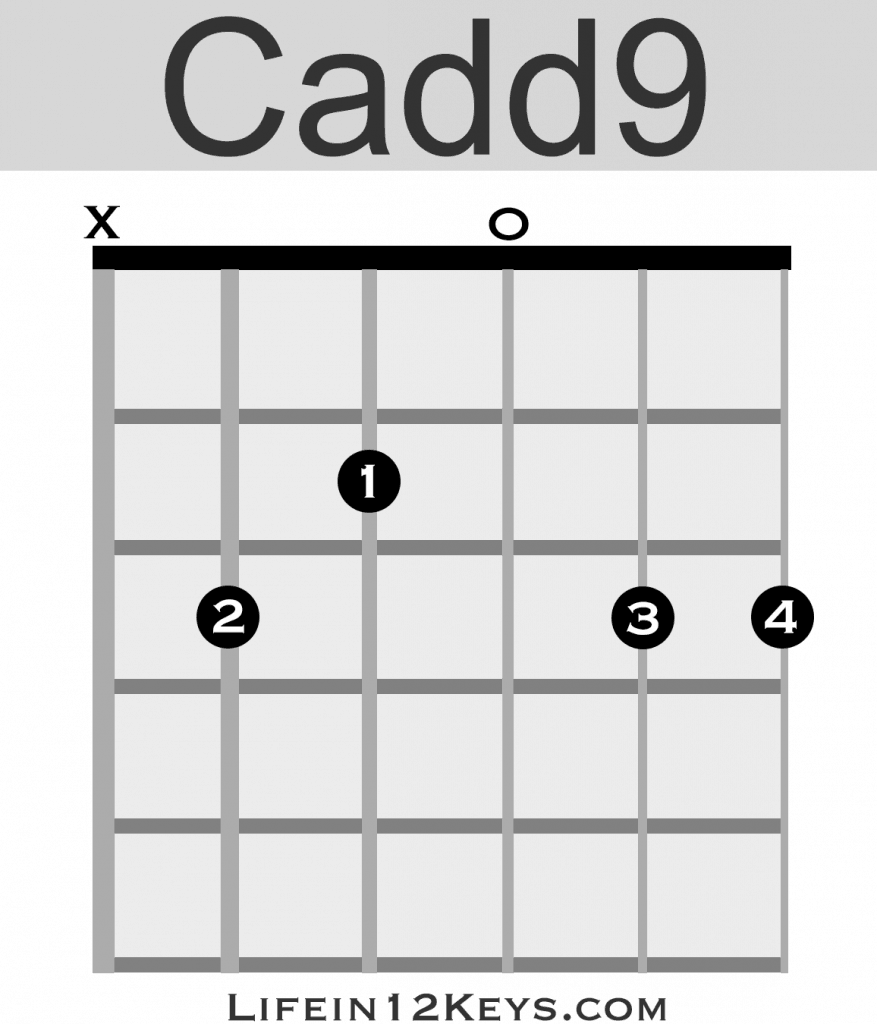
You’re probably thinking, “ok isn’t the 9th just a 2nd?” Well, yes and no.
In Music theory the 9th refers specifically to the 2nd scale tone, but one octave higher, which is how we get the name “9th”.
The Barre Chord
A barre chord refers to any chord that requires you to cover 2 or more strings with 1 finger. Typically your 1st or 3rd fingers on the fretting hand. Let’s take a look at everyones first barre chord, the F Major.
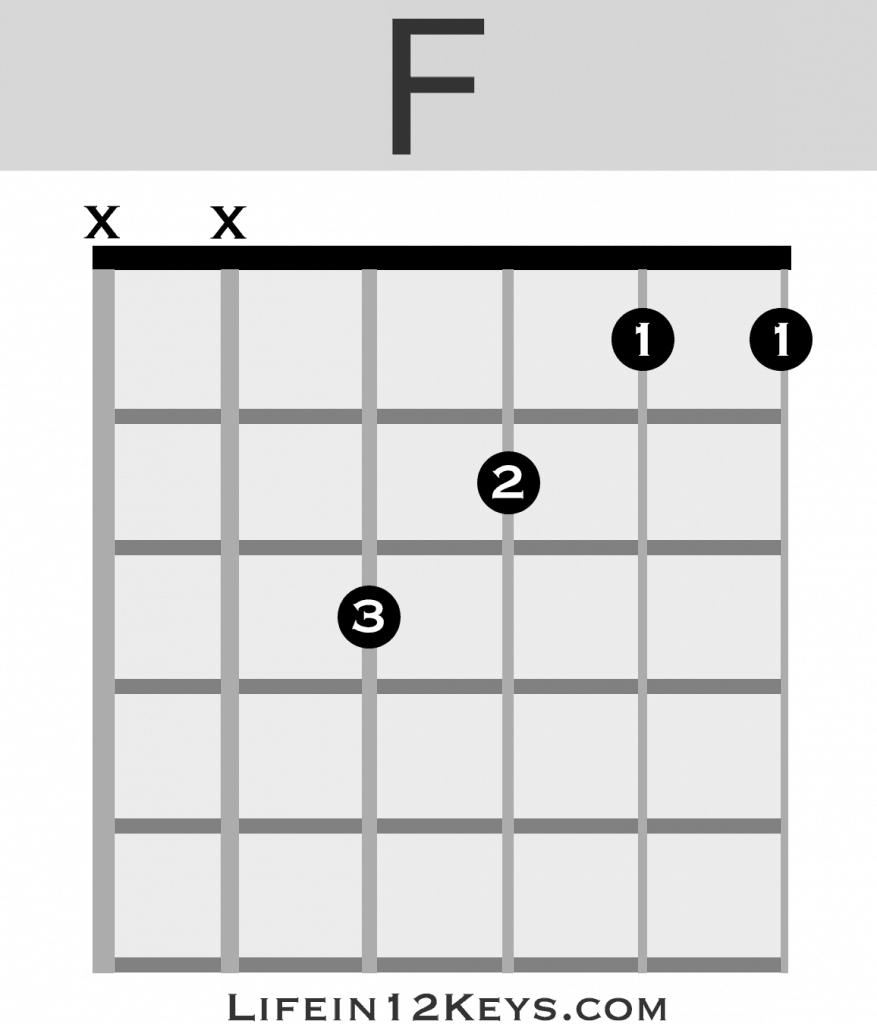
There are a few ways to approach barre chords depending on the size and shape of your hands and fingers. Typically, beginner guitarists will have the most success with the F chord if they angle the 1st finger slightly inward (pointing toward the second fret area).
Some Final Thoughts on Chords
I’ve always found that there are 2 types of guitarists out there:
- Those that just want to have fun and play.
- Those that need to know how everything works.
I’ve always been a #2 type, but that doesn’t mean you have to be. The music theory in this lesson is completely optional and should be digested slowly while having fun learning some chords and songs.
If you’re more like me and want to delve even deeper into all of this stuff, here are some other lessons on the website that will take you further in your musical journey.
- Chords 101, Including how to build your own guitar chords and find the notes on the neck.
- Guitar Chords as part of my 7 Day Practice Routine.
- Strumming and Accompaniment – Easy Beginner Guitar Songs
- Scales and The Circle of Keys – Essential for putting chords together in Key!
Beginner Guitar Chords PDF
Lastly, here is a downloadable PDF of all the chords listed above for easy reference and practice.
Beginner Guitar Chords PDF
Common Beginner Guitar Chord Questions
Until next time,
Craig Smith – Guitarist & Author
Craig Smith is a professional Guitarist, Teacher, and Writer living in Sanford, Florida. Craig has taught guitar lessons, performed 200+ gigs per year for nearly 30 years, and published 4 guitar instructional books. When he’s not gigging or writing, you may find him by the pool with his wife Celeste, 4 Chihuahuas, and a drink. 🎸

